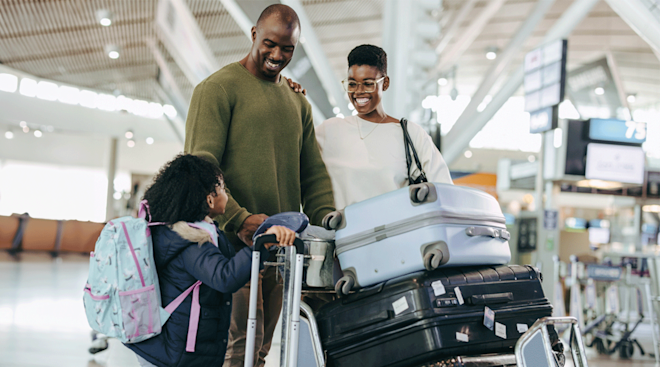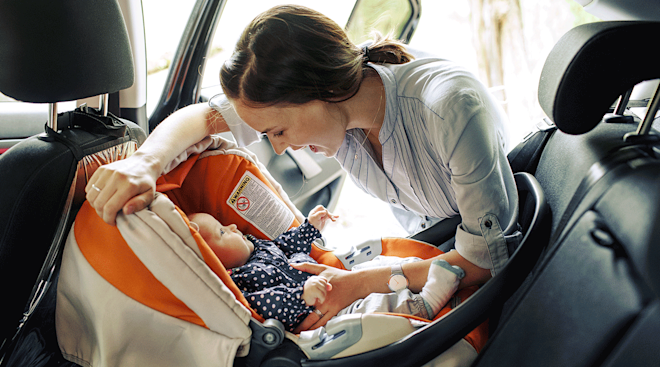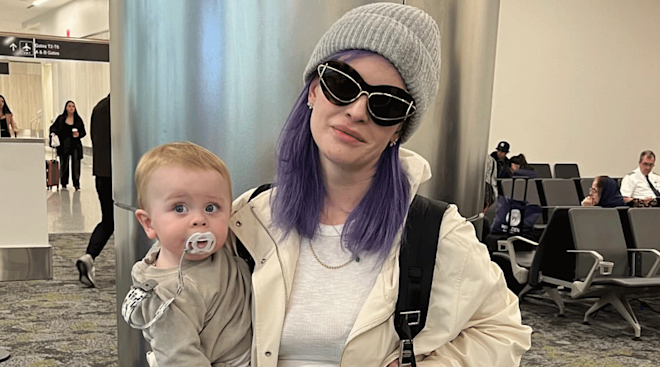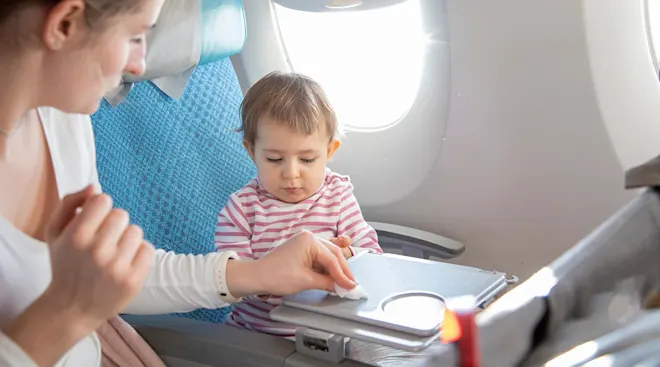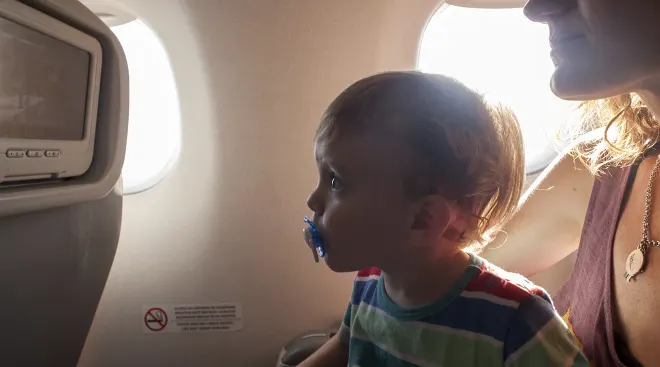Travel Tips for Changing Time Zones With a Little One in Tow
Vacations can be a blast—but they can also wreak havoc on your child’s sleep schedule, especially if you’re switching time zones along the way. And parents can all agree, a jet lagged baby isn’t much fun. So how do you help your little one adjust to local time? Try these tips to help ease the transition.
If you’re only taking a short trip one or two time zones away, it may be better to just keep your child on their normal sleep schedule and set meal times, naps and bedtime an hour earlier or later, depending on whether you headed east or west. For example, if you traveled somewhere that’s an hour ahead, baby’s standard 6 p.m. dinner simply happens at 7 p.m. local time and bedtime slides from 8 p.m. to 7 p.m. It’s not a solution for longer trips or when you cross multiple time zones, but for quick jaunts it could make it easier than trying to get your little one to adjust to a new routine—especially if you’ve already got a good sleep schedule going.
If you have the time (and patience), you can start shifting your child’s schedule to the new time zone before your trip. “Ideally, start the adjustment process for your child a couple of weeks before going to a different time zone,” says Nilong Vyas, MD, a pediatrician and founder of Sleepless in NOLA, a sleep consultancy in New Orleans. “Start by moving your child’s schedule 20 minutes in the direction it needs to go. For example, put them to sleep 20 minutes later than normal and get them up in the morning 20 minutes later. Each day, move the schedule by 20 minutes at each wake time/bedtime. Obviously, if this process is started earlier, the time increments can be adjusted by a smaller amount and it’s less noticeable by your little one.”
If you haven’t shifted your little one’s sleep schedule ahead of time and you’re crossing more than three time zones, consider taking a night flight. “Not only will the child be happy to sleep, but you’ll also be happy that they’ll be rested—and your fellow flight passengers will be pleased as well,” Vyas says. Pack whatever sleep aids you’ll need in your carry-on, whether it’s baby’s favorite lovey or your child’s cozy pillow and blanket. Not only will it help your kids arrive at your destination refreshed, it also reduces the amount of time you have to keep them occupied on the plane.
As soon as you arrive at your destination, start operating on local time. “This means feeding and putting baby down for naps when they would typically eat and take naps at home,” says certified sleep coach Linda Szmulewitz, LCSW, CGSC, of Sleep Tight Consultants in Chicago. So if baby normally naps at 1 p.m. back home, plan for a nap at 1 p.m. local time. If bedtime is usually at 7 p.m., try to keep your kiddo up until 7 rolls around. The trick here is to not let baby get overtired, which will make it even harder for them to fall asleep. To help, make sure to bring any sleeping aids your child likes, such as a sound machine, lovey, night light or pacifier. We’re not going to lie, it can be a bit rough for the first few days, but your child will soon adjust. (Read on for more tips on how to help your little one through it.)
The best cure for a jet lagged baby? Make sure you spend plenty of time outside during the day, since being in the sun will signal to the body that it’s time to be awake. “Shifting time schedules is much easier to do with the help of natural sunlight and fresh air,” Szmulewitz says. “This is part of what helps to set your circadian rhythm—your internal clock.” But be smart about when you get your dose of light: If you’re traveling east, you want to soak up sunlight early to advance the body’s clock and get ready for an earlier-than-normal bedtime; if you’re traveling west, expose yourself to light at dusk and early evening to delay your internal clock so you can stay up for a later-than-normal bedtime. You can even download an app—like Timeshifter—that’ll help pinpoint exactly when you want to seek out light and when to avoid it.
It may be tempting to let your kiddos sleep a little longer if they’re finally down for a good nap, but think twice before you head down that path. “You don’t want them to take naps that are longer than they would be at home while your kids are adjusting,” Szmulewitz says. If your little one is sleepy because it’s bedtime back home, a long afternoon nap would essentially be their night sleep and would make it harder for your kiddo to get some shuteye once nighttime actually rolls around.
Making your child’s bedroom dark at night can help them reset their clock to local time. Keep the lights off and use blackout shades if you can. “If they wake in the middle of the night and are struggling to go back to sleep, it may be necessary to get them up and play quietly without turning on lights,” Szmuelwitz says. “After an hour, try to put them back to bed. After the first two days of getting naps and feeding on the right schedule, I would then treat any night wakings the way you would if your child woke at home.”
This natural supplement can be helpful to get your little one on local time when you first arrive, and help your little one reset when you’re heading home. But it’s best to limit your use. “It’s safest and most beneficial to get your child out in daylight in the new time zone and put them to sleep based on the new time,” Vyas says. However, melatonin can be useful in certain circumstances—for example, if you arrive at your destination at night and your child isn’t sleepy. “It’s okay to use melatonin if the child or parent needs assistance getting back on track,” Vyas says. “I don’t personally recommend using it in children daily because the body can stop producing it and then create an environment where one can only sleep if the supplements have been taken. People think it’s ‘natural,’ since it’s something the body already produces, and that can lead to overuse of the drug.”
Traveling across time zones can be tough on everyone—so don’t be afraid to be flexible to ensure a happier trip. “The goal is to have fun while on vacation,” Vyas says. “Try to maintain as much consistency as possible, but sometimes, trying to get your child on a sleep schedule while on vacation can be difficult. You may have to break the rules and let the child nap when and where they want to. Then, upon returning home, get them back on their regular schedule.”
Published November 2018
Plus, more from The Bump:
Navigate forward to interact with the calendar and select a date. Press the question mark key to get the keyboard shortcuts for changing dates.

































